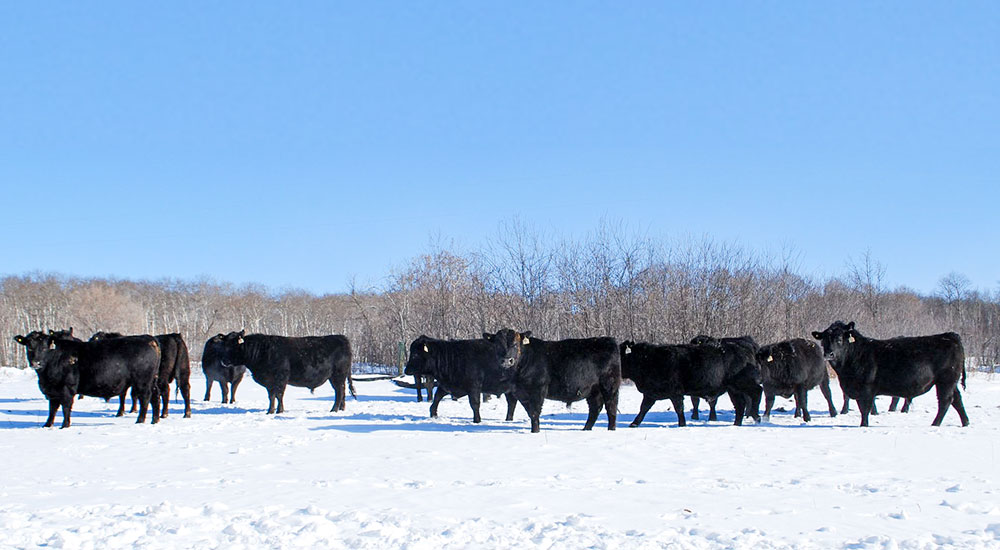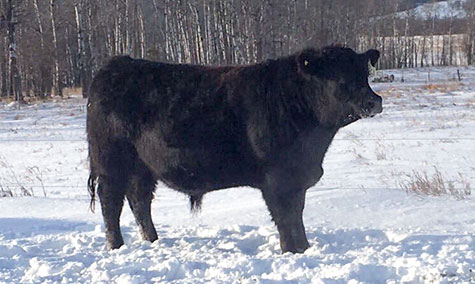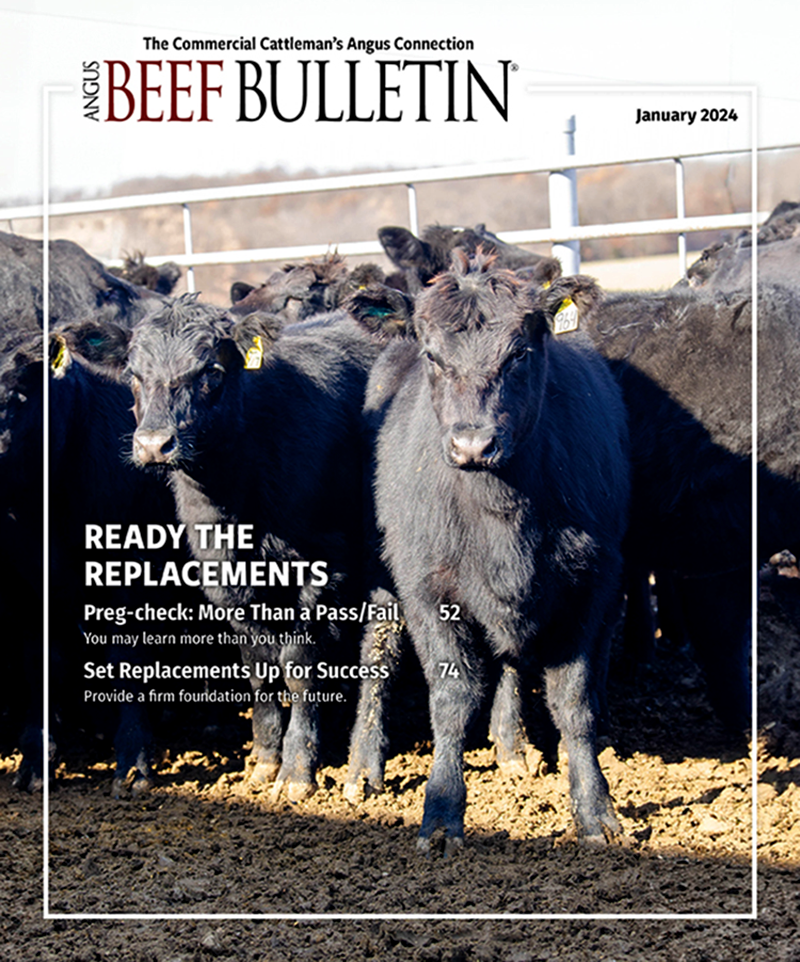
Winter Bull Nutrition
To ensure a healthy breeding bull, feed enough energy and protein.
The bull supplies half of the genetics for your calf crop, so you want to make sure your bulls are fertile, healthy, sound and in good body condition through winter.
Young bulls are still growing, so they need adequate energy and protein to supply their needs for growth, as well as maintenance, body condition and body heat on a cold winter day. According to John McKinnon, professor and Saskatchewan beef industry chair at the University of Saskatchewan, a bull’s nutrient requirements during winter depend a lot on his age, body condition after coming off pasture and what your target weight is for that bull for the next breeding season.
Yearling bulls should reach puberty at least two to four months before the breeding season. They should also be at least 50% — and preferably 60%-65% — of their mature body weight by then.
“This would be 1,200 to 1,300 pounds as a yearling ready to breed cows if the bull’s mature weight will be 2,000 pounds,” he says. A 2-year-old bull that will mature at about 2,000 lb. should be 80%-85% of his mature weight, or about 1,600-1,700 lb.
“Yearlings and 2-year-olds are still growing, and mature bulls that lost condition over breeding season would also have a target weight ideal for their breed and frame size,” says McKinnon. “Thus the starting point, or condition of the bulls coming off pasture in the fall or coming out of the breeding season, helps you estimate how much weight that bull might need to gain or maintain over winter to meet appropriate target weight for next spring or summer’s breeding season. This sets the management program for the winter nutrition.”
This may include putting on lost condition that occurred during the summer, or additional growth for yearlings and 2-year-olds. During winter, body condition should be monitored to make sure young bulls continue to grow while staying in good flesh, and older bulls should be monitored to make sure they are not losing weight. You want bulls to carry an adequate amount of fat cover to provide insulation during cold weather and to supply energy reserves, but allowing bulls to get too fat can interfere with their fertility the next breeding season.
Overfat bulls usually have poor semen quality, reduced semen production, reduced conception rates, fewer cows bred due to lack of libido and may fall apart during the breeding season.
 |
You want bulls to carry an adequate amount of fat cover to provide insulation and energy reserves, but allowing bulls to get too fat can interfere with their fertility the next breeding season. |
For a winter feeding program you may need to separate younger bulls from the older ones because their nutritional needs are different. You may also need to separate bulls according to body condition — whether they are carrying adequate fat cover and simply need to maintain it, or need to gain weight and how much — and feed accordingly. A weanling that needs to grow and reach puberty will need a higher level of nutrition than an older bull. The older bulls will become too fat on a feeding program for young, growing bulls.
Know what you are feeding
McKinnon says it is important to have your feed analyzed to know what you are feeding. This will enable you to know whether your forages are meeting expectations or if you need to add supplements for protein or energy to the diet. You may also need to provide mineral supplementation and perhaps vitamins if forages are deficient. It’s also crucial to increase energy levels during cold weather, and especially important to make sure to provide enough protein in the diet to enable rumen microbes to process and create heat energy from forages.
“This year some regions were dry, and forages are short on protein. Producers were putting up anything they could, and quality may be low,” says McKinnon. Feeding lower-quality forages this winter will cause greater need for supplementation.
“After coming through a dry summer, many bulls may have lost weight. The drought here was spotty, but there are many areas that had a very dry summer,” he says. Producers need to assess their own situation and their bulls to make a feeding plan.
Editor’s note: Heather Smith Thomas is a cattlewoman and freelance writer from Salmon, Idaho. Photos by Arron Nerbus.



